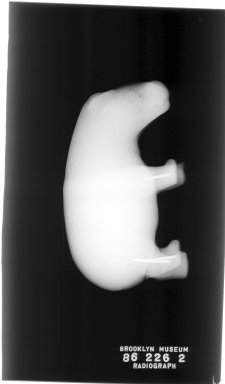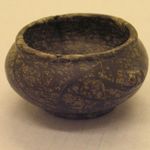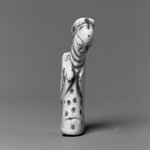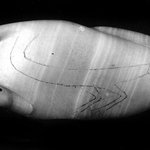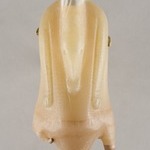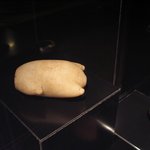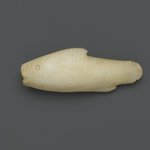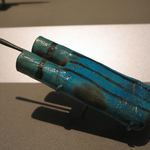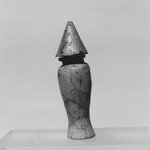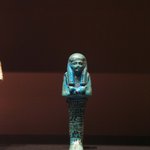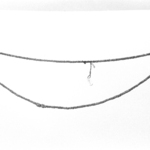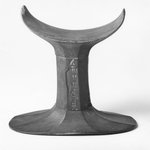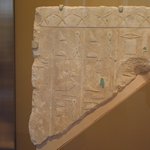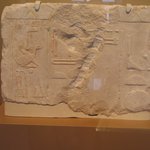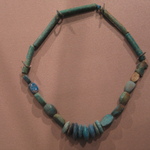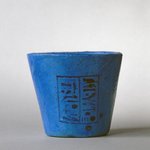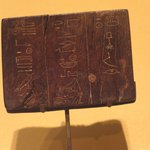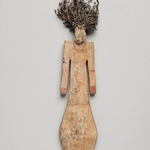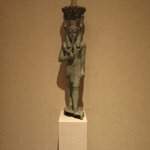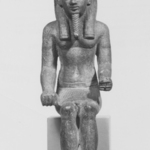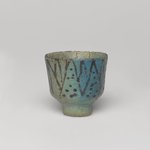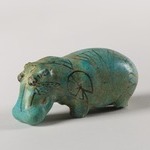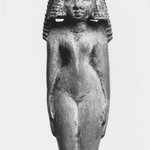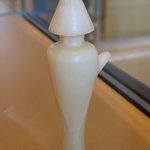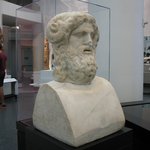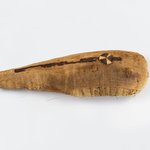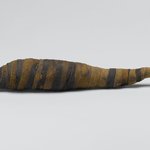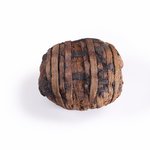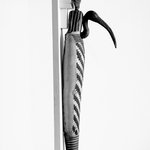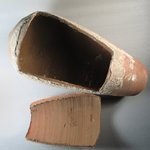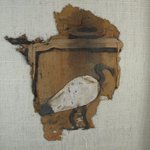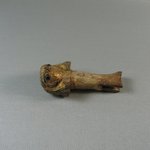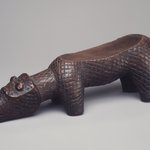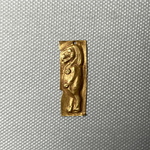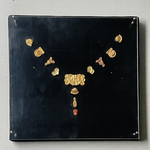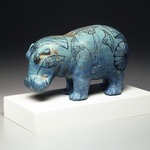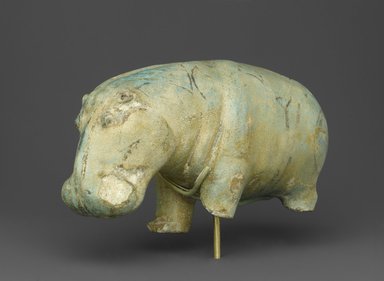

Hippopotamus, ca. 1938–1539 B.C.E. Faience, 4 5/16 × 2 15/16 × 7 3/16 in., 2 lb. (11 × 7.5 × 18.3 cm, 0.91kg). Brooklyn Museum, Gift of the Ernest Erickson Foundation, Inc., 86.226.2. Creative Commons-BY (Photo: Brooklyn Museum, 86.226.2_PS2.jpg)
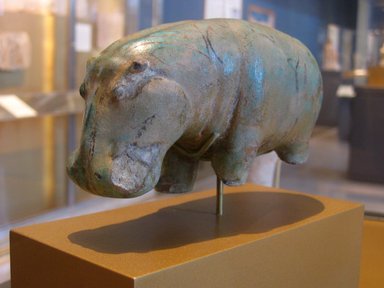
Hippopotamus, ca. 1938–1539 B.C.E. Faience, 4 5/16 × 2 15/16 × 7 3/16 in., 2 lb. (11 × 7.5 × 18.3 cm, 0.91kg). Brooklyn Museum, Gift of the Ernest Erickson Foundation, Inc., 86.226.2. Creative Commons-BY (Photo: Brooklyn Museum, CUR.86.226.2_erg2.jpg)
Hippopotamus
Egyptian, Classical, Ancient Near Eastern Art
On View: Old Kingdom to 18th Dynasty, Egyptian Galleries, 3rd Floor
The standing hippopotamus represented Seth, the brother of Osiris who murdered him and then claimed his throne. It was thus a symbol of chaos. Egyptians controlled negative forces in the tomb by including a hippopotamus with the legs purposely broken. The lotus flowers drawn on its flanks reflect the animal as it would be seen standing in the Nile among the natural vegetation.
MEDIUM
Faience
DATES
ca. 1938–1539 B.C.E.
DYNASTY
Dynasty 12 to Dynasty 17
PERIOD
Middle Kingdom to Second Intermediate Period
DIMENSIONS
4 5/16 × 2 15/16 × 7 3/16 in., 2 lb. (11 × 7.5 × 18.3 cm, 0.91kg) (show scale)



COLLECTIONS
Egyptian, Classical, Ancient Near Eastern Art
ACCESSION NUMBER
86.226.2
CREDIT LINE
Gift of the Ernest Erickson Foundation, Inc.
CATALOGUE DESCRIPTION
Faience statuette of standing hippopotamus. Head frontal and slightly lowered, feet parallel, tail in high relief. Glazed blue, now largely turned green. Decorations on manganese of lotus flowers and buds arranged in conventional pattern. Rosette (lotus in top view) on each buttock. Lotus leaf on each side of head.
Glaze on left side of body badly worn. Right ear chipped. Chips on jaw (each side). Minor chips on body.
EXHIBITIONS
MUSEUM LOCATION
This item is on view in Old Kingdom to 18th Dynasty, Egyptian Galleries, 3rd Floor
CAPTION
Hippopotamus, ca. 1938–1539 B.C.E. Faience, 4 5/16 × 2 15/16 × 7 3/16 in., 2 lb. (11 × 7.5 × 18.3 cm, 0.91kg). Brooklyn Museum, Gift of the Ernest Erickson Foundation, Inc., 86.226.2. Creative Commons-BY (Photo: Brooklyn Museum, 86.226.2_PS2.jpg)
IMAGE
overall, 86.226.2_PS2.jpg. Brooklyn Museum photograph, 2007
"CUR" at the beginning of an image file name means that the image was created by a curatorial staff member. These study images may be digital point-and-shoot photographs, when we don\'t yet have high-quality studio photography, or they may be scans of older negatives, slides, or photographic prints, providing historical documentation of the object.
RIGHTS STATEMENT
Creative Commons-BY
You may download and use Brooklyn Museum images of this three-dimensional work in accordance with a Creative Commons license. Fair use, as understood under the United States Copyright Act, may also apply.
Please include caption information from this page and credit the Brooklyn Museum. If you need a high resolution file, please fill out our online application form (charges apply).
For further information about copyright, we recommend resources at the United States Library of Congress, Cornell University, Copyright and Cultural Institutions: Guidelines for U.S. Libraries, Archives, and Museums, and Copyright Watch.
For more information about the Museum's rights project, including how rights types are assigned, please see our blog posts on copyright.
If you have any information regarding this work and rights to it, please contact copyright@brooklynmuseum.org.
RECORD COMPLETENESS
Not every record you will find here is complete. More information is available for some works than for others, and some entries have been updated more recently. Records are frequently reviewed and revised, and we welcome any additional information you might have.
